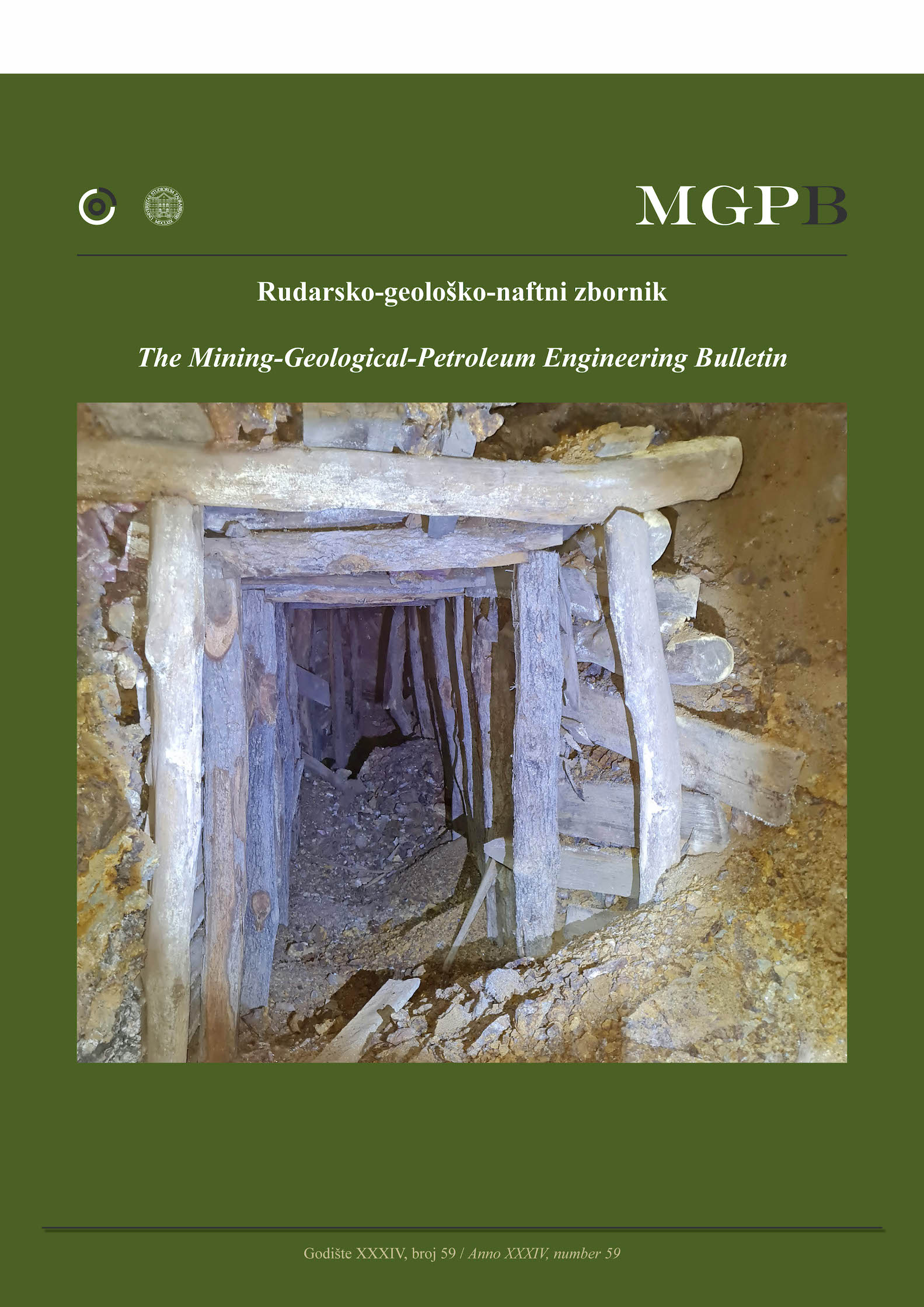Review on the mechanical properties of frozen rocks
DOI:
https://doi.org/10.17794/rgn.2022.3.7Keywords:
frozen rock, strength parameters, Young’s modulus, mathematical modellingAbstract
The freezing technique has been employed for a long time to strengthen the mechanical properties of intact rock and rock mass; however, it has not received as much attention as it deserves. This paper thoroughly reviews the effect of freezing on the essential mechanical properties, including uniaxial compressive strength, tensile strength, and Young’s modulus. The laboratory tests include the determination of density, ultrasound speed propagation, and strength parameters such as uniaxial compressive strength, tensile strength, and Young’s modulus. According to previously published results, the strength of different rocks such as marl, limestone, sandstone, tuff, granite, and marble increased significantly due to freezing when the samples were tested in frozen conditions. However, there is variation in strength increase based on rock type. It is outlined here that freezing increases rock strength by a factor of 4 in porous rock and by a factor of 1.8 in crystalline rock. Additionally, Young’s modulus increases with a decrease in temperature; however, a further decrease in temperature from -10 to -20 °C has no effect on Young’s modulus. Moreover, mathematical modelling for frozen rock has been reviewed comprehensively. It was found that porosity, the density of rock grains, density of water, residual unfrozen water content, minimum unfrozen water content at freezing point, material parameters, the initial temperature of rock, crystal size, orientation and alignment of minerals, and the loading rate are the most critical parameters that influence frozen rock strength.
Downloads
Published
How to Cite
Issue
Section
License
Copyright (c) 2022 authors and journal

This work is licensed under a Creative Commons Attribution 4.0 International License.
Creative Commons-BY
Authors who publish with this journal agree to the following terms:
In agreeing this form, you certify that:
- You read the ethical codex of the RGN zbornik available at journal web.
- You submitted work is your original work, and has not previously been published and does not include any form of plagiarism.
- You own copyright in the submitted work, and are therefore permitted to assign the licence to publish to RGN zbornik.
- Your submitted work contains no violation of any existing copyright or other third party right or any material of an obscene, libellous or otherwise unlawful nature.
- You have obtained permission for and acknowledged the source of any illustrations, diagrams or other material included in the work of which you are not the copyright owner.
- You have taken due care to ensure the accuracy of the work, and that, to the best of your knowledge, there are no false statements made within it.
- All co-authors of this submitted work are aware of, and in agreement with, the terms of this licence and that the submitted manuscript has been approved by these authors.
Publication licence
You retain copyright in your submitted work, according to journal license policy (CC-BY). By signing this form you agree that RGN zbornik may publish it under the publication licence. In summary the licence allows the following:
Anyone is free:
- To copy, distribute, display, and perform the work.
- To make derivative works.
Under the following conditions:
- The original author must always be given credit.
- The work may not be used for commercial purposes.
- If the work is altered, transformed, or built upon, the resulting work may only be distributed under a licence identical to this one.
Exceptions to the licence
In addition to publishing the work printed under the above licence, RGN zbornik will also enable the work to be visible online.
The journal editorial can change the licence rules anytime but it cannot retroactively restrict author(s) rights.


